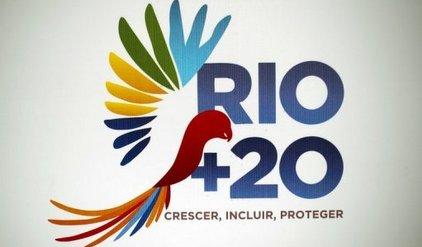Wed, 27 Jun 2012 12:13 GMT
A man sits with his two dogs after removing them from his flooded home in Colombo, Sri Lanka, on November 11, 2010. Thousands of families were displaced after the heaviest rains in the Sri Lankan capital since 1992. REUTERS/Andrew Caballero-Reynolds
By Amantha Perera
RIO DE JANEIRO (AlertNet) – Just how fast is sustainable urban development becoming a focus? Look at its profile in the just-concluded Rio+20 UN conference on sustainable development in Rio.
Experts, UN officials and activists spoke of how the world’s bulging urban population will need a bigger share of resources and attention. If the bulk of the world’s urban population remains poor and locked out of the development processes, stresses will multiply, they said.
And changing climate patterns, they added, are likely to exacerbate the problems cities and their residents face. Asia, in particularly, will have to take action quickly as it is poised to see the largest urban growth in coming decades.
“It is tectonic shift in city development patterns that we are talking about here, and it will take time,” George McCarthy, director of the U.S.-based Ford Foundation’s urban opportunities programme told AlertNet.
“City planners will have to look more at investing in housing, transport, schools and other such infrastructure,” he said, in order to help the growing legions of urban poor.
Asia is where most of the changes are coming. Of the 1 billion people who will be added to the world's urban population in the next two decades, half will be in India and China, said Cornie Huizenga, convener of the Partnership on Sustainable, Low Carbon Transport (SloCat), a Shanghai-based organization that lobbies for sustainable urban transportation systems.
The world’s cities are already home to a billion in poverty, and failing to make needed changes will drive those numbers up, Huizenga warned.
“Cities will have to wake up to these issues, sooner (rather) than later,” he said.
For now, problems remain. Many cities, for instance, have had a decades-long focus on improving the efficiency of individual motor vehicles while failing to invest as much in improving public transport systems, Huizenga said. But SloCat research suggests that the combined costs of congestion, air pollution, road accidents and transport-related climate change are the equivalent of 5 to 10 percent of GDP for some Asian cities.
“If a city is developing at 12 percent (GDP) and this alone is taking out 10 percent, this is something that needs urgent fixing,” Huizenga said. At Rio, SloCat and other organizations lobbied to promote greater focus on and investment in public transport systems in cities – with some success.
$175 BILLION IN FUNDING
During the first day of the conference, six development banks including the dominant World Bank and Asian Development Bank said that they would create a $175 billion fund to help countries improve urban public transport.
The costs involved in creating the kind of development shifts advocated by McCarthy and Huizenga will not be small, especially for Asian cities.
Recently the World Bank said that it was providing $233 million in assistance to the Metro Development Project, which aims to improve the water retention and drainage system in Colombo, Sri Lanka’s capital.
In Colombo, over 47 percent of people live in what are classified as informal settlements, according to Sri Lanka’s Urban Development Authority (UDA). Such settlements and illegal landfills, which in some cases impede on waterways and drainage areas, have reduced the city’s drainage capacity by at least 30 percent in the last decade, the World Bank said.
In an effort to move informal settlers out of the path of waterways, the UDA is currently building 10,000 high-rise apartments, and another 15,000 are planned. Of the $233 million earmarked for the new Colombo drainage management scheme, over $50 million is expected to toward new housing, compensation payments and other expenses for around 1,500 families likely to lose their homes.
Improving public transportation also can carry big costs. In Asia, building a kilometer of subway system costs around $100 million and a kilometer of bus rapid transit system about $10 million, Huizenga said. The World Bank and Asian Development Bank are both expected to boost lending for such projects, he said.
But as urbanisation races ahead and climate change brings worsening pressures, many cities are realising the importance of making the needed investments, said Micheal Replogle, policy director at the Washington-basedInstitute for Transportation and Development Policy.
Colombo, for example, has seen parts of the city go underwater at least six times in the last 18 months as climate change appears to be altering the monsoon and bringing briefer but more intense rains. That has been one driver for the new spending on improving drainage, he said.
“I think cities are slowly realising the importance of investing in areas like public transport,” Replogle said.
The Ford Foundation’s McCarthy said one advantage for Asian cities trying to improve their urban infrastructure is that “they stand to gain from new technology and how things worked or otherwise in other parts of the world.”
Amantha Perera is a freelance writer based in Sri Lanka.
Link to the source:- http://www.trust.org/alertnet/news/population-growth-climate-change-drive-need-for-urban-rethink/






